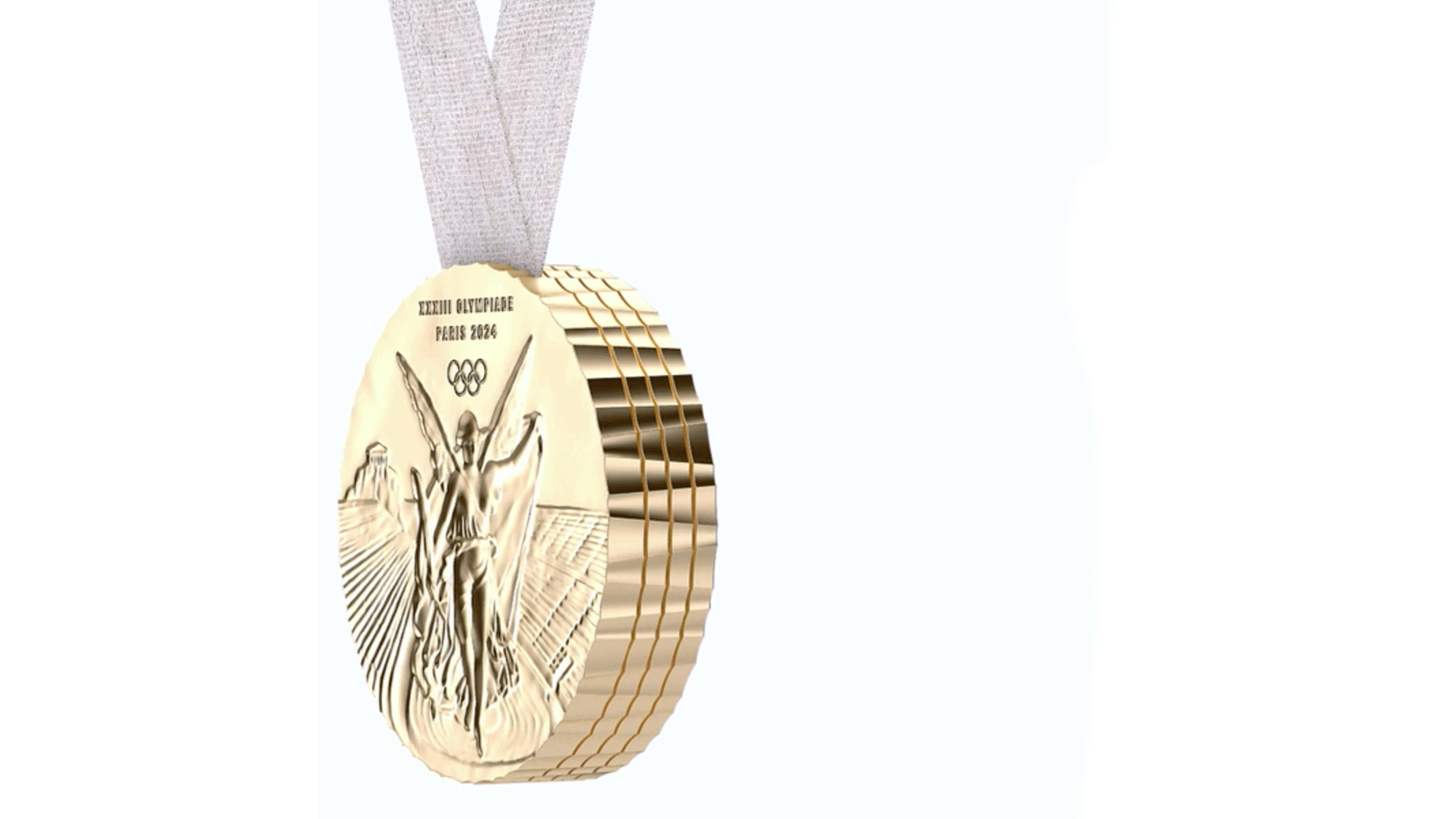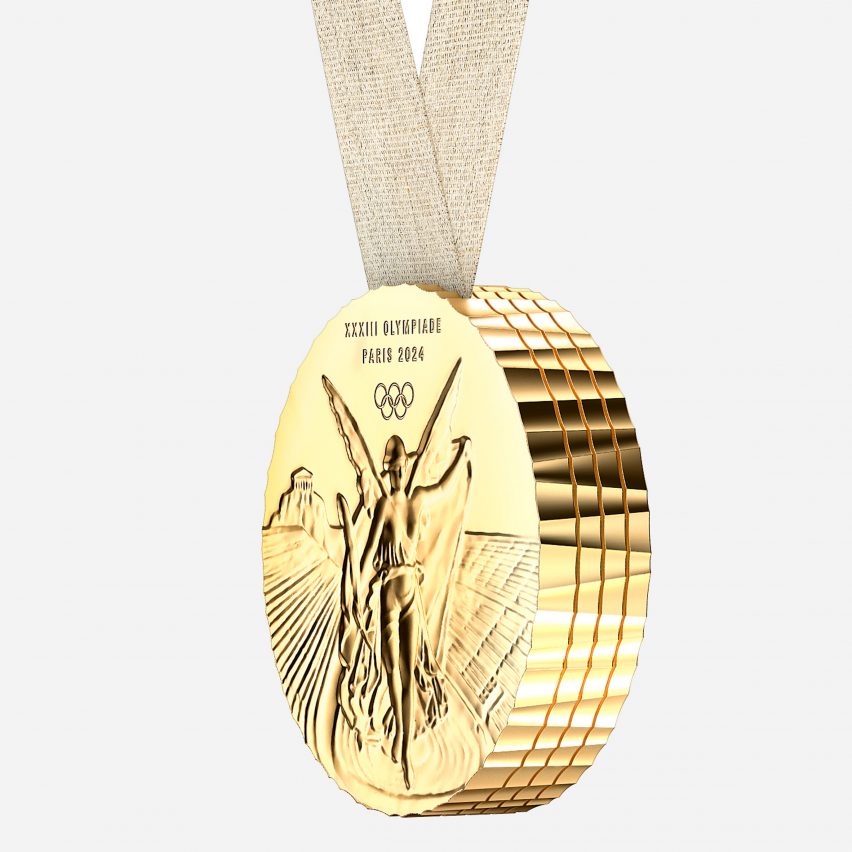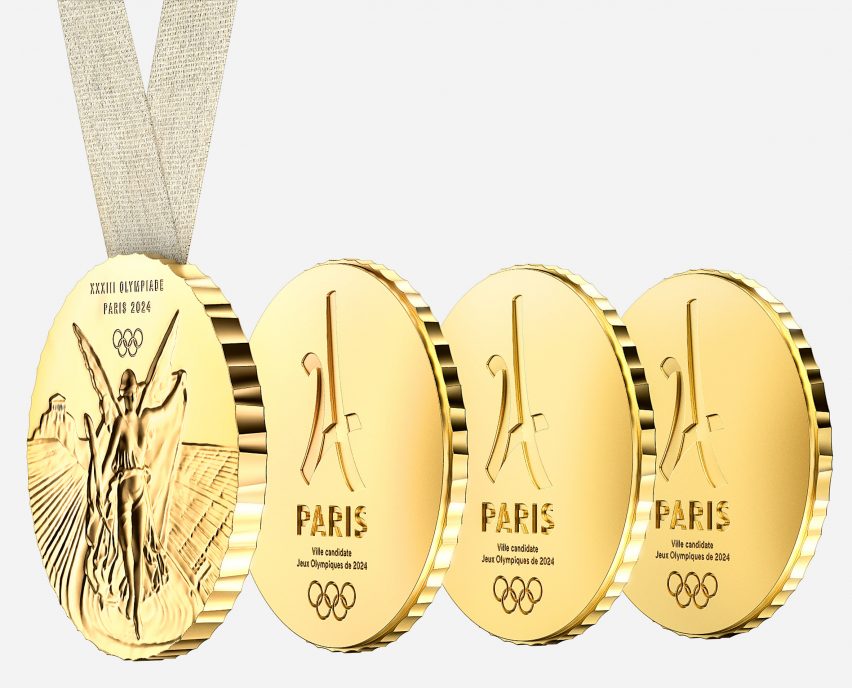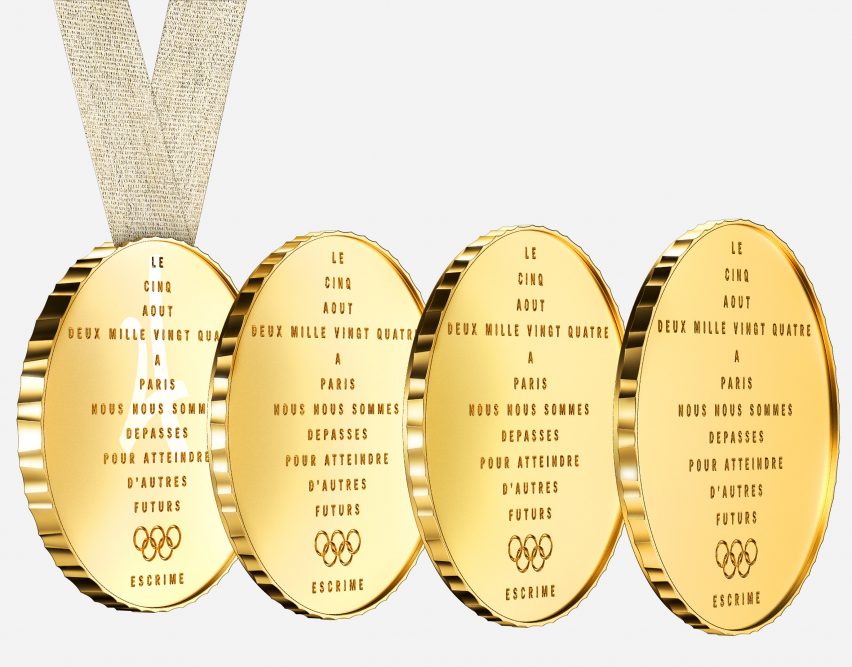
Philippe Starck's Paris 2024 Olympic medals are designed to be shared
These medals designed by Philippe Starck split into four, allowing winning Olympic athletes to share their success with their families.
Having previously designed the torch for the 1992 Winter Olympics in Albertville, France, the designer was asked to create a new medal concept as part of the country's bid to host the Games in 2024.
On the surface, the design appears much the same as the typical sporting medal. However, should the athlete want to, they can split the disc into three additional sections.

"Today, more than ever, the truth is that you're not winning alone, so I wanted this medal to reflect that," said Starck. "If the winner wants to share it, they can share it."
"It's a really nice way of truly showing team spirit. The winner can literally take his or her medal and separate it into pieces to be given away."
Starck says this updated design will allow athletes to share their Olympic success for the first time "in the very moment it happens".

"This medal has something very special about it," said the French designer. "Because normally a medal tends [to be] a sort of witness, a message that says 'I was there, I did it, I outdid myself. I went beyond myself, I won, it is extraordinary.'"
"This way, everyone you share it with becomes a witness of such an important moment."

Should the Paris Olympic bid be successful, Starck's design would be presented at the Games in 2024, after the upcoming Toyko Games have taken place in 2020.
For the Tokyo medals, Olympic organisers are reportedly considering mining Japan's vast repositories of e-waste for millions of discarded smartphones and computers.
Partly recycled materials were also used for the medals at the Rio 2016 Olympics. The silver and bronze medals were made of 30 per cent recycled metals, while half of the plastic in the ribbons came from recycled bottles.
Starck, 68, is one of the most famous and prolific designers in the world. According to his website, he has designed 10,000 objects.
His best-known pieces include the iconic Louis Ghost chair, Gnome stool and Juicy Salif citrus squeezer.
Last year, he designed his first smartphone, created a minimal summer sandal collection for Brazilian brand Ipanema and added three eau de toilettes to his extensive catalogue of products.
He placed at number 98 in the inaugural Dezeen Hot List of movers and shakers in the design world.